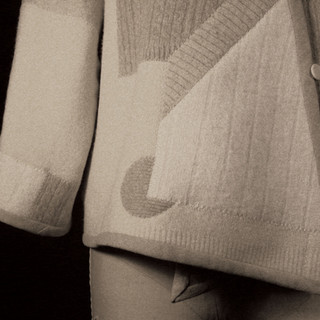Warm Memories of Mom
- Gail Yellen
- May 10, 2020
- 3 min read
Updated: May 8, 2022
My mother had a lifelong love affair with the color brown, and every one of its variations. Years before fashion and wardrobe experts told us to build our wardrobes around one or two colors, she did just that. My mother died in November 2008 and as my sister and I folded her clothes to donate to a local thrift shop, I looked at the pile of wool sweaters— a lovely palette of beiges, creams, whites and taupes — and a recycling idea began to take shape. Why not take four or five sweaters, felt them and create a collage jacket? I had recently designed my Template Set 1 jacket pattern that lent itself perfectly to the idea.
I first became fascinated with felting wool knits after reading an article in Threads #109 (Oct/Nov 2003). It’s fun, easy and the fabric transformations never fail to amaze. Felted wool is easy to sew and embellish, and the warmth of a felted garment is a big plus during Connecticut winters.
To get started on my recycled heirloom jacket project, I washed four of my mother’s sweaters in hot water with a small amount of detergent and dried them in the dryer until the desired amount of felting was achieved. Using a rotary cutter, I carefully cut each sweater along the seams and pressed all of the pieces. I drew numerous sketches and revised until I was satisfied with the collage design, and subsequently created two sets of pattern pieces: one as a master pattern, and one to cut apart along the collage lines for cutting the various wools. Because my mother was very petite (under 5 feet tall) and had a tiny frame, the original sizes of her sweaters were small, and after the felting process, smaller still. There wasn’t a lot of leeway for mistakes.
To assemble the collage pieces, all seams were butted together with a 3-step zigzag stitch to eliminate bulk and stiffness. As felted wool is a firm, stable fabric, no interfacing was used. After each front, back and sleeve was pieced, I pressed it to smooth away any puckers. To correct any slight distortions created during the sewing or pressing stages, each piece was “trued up” with the corresponding master pattern.
Shoulder, sleeve and side seam allowances were trimmed off. However, this construction technique presented a dilemma: how to insert on-seam side pockets, (cut from linen), without a traditional side seam. After giving it much thought, I devised a “wrap-around” pocket technique. I serged the curved edges of the pocket bags using a narrow 3-thread stitch to finish the raw edge exposure. The pockets were sewn to the jacket right sides together with a ¼” seam allowance and the front pocket bags were wrapped around to the inside. The back pocket bags were sewn in the same manner and pressed away from the jacket back. It worked beautifully. Bemberg rayon was selected for lining. The jacket perimeter was finished with linen bias binding.

A large vintage button from my button collection was just the bold closure the jacket required. A “wrap around” variation of the bound buttonhole echoed the pocket design. Two smaller white buttons and covered elastic button loops closed the lower front edge.
Much of my mother’s pride in my sewing accomplishments was rooted in the memory of her own mother’s artistic sewing. My grandmother’s final sewing project was a blue dress with a white collar for me. If allowed, I would have worn it to kindergarten every day. Sewing was never a passion of my mother’s— apparently it skipped a generation— but if the stitches of my heirloom collage jacket are as strong as she was, it should last at least 92 years. The jacket is a blend of contemporary design and vintage elements–just like her!







































